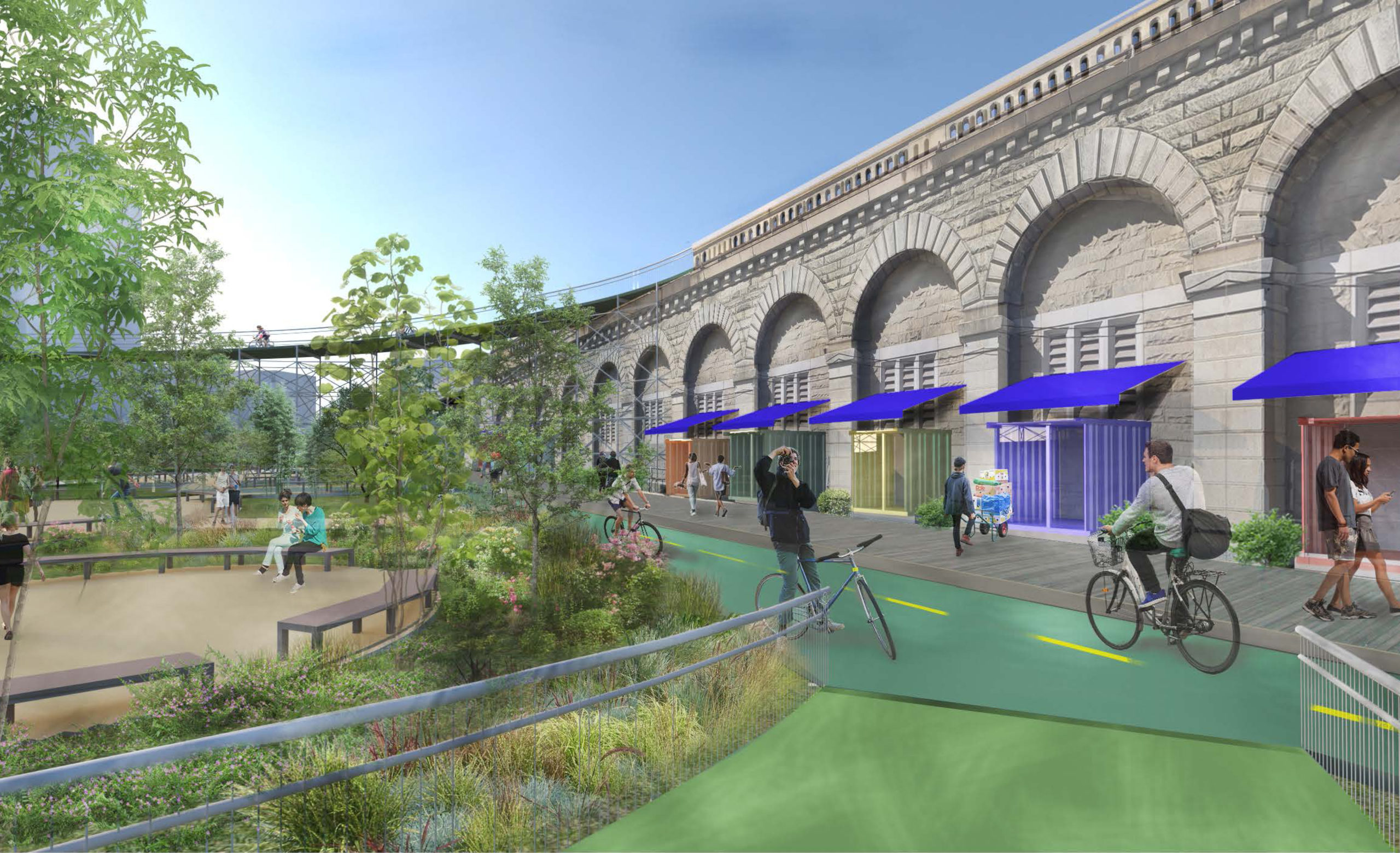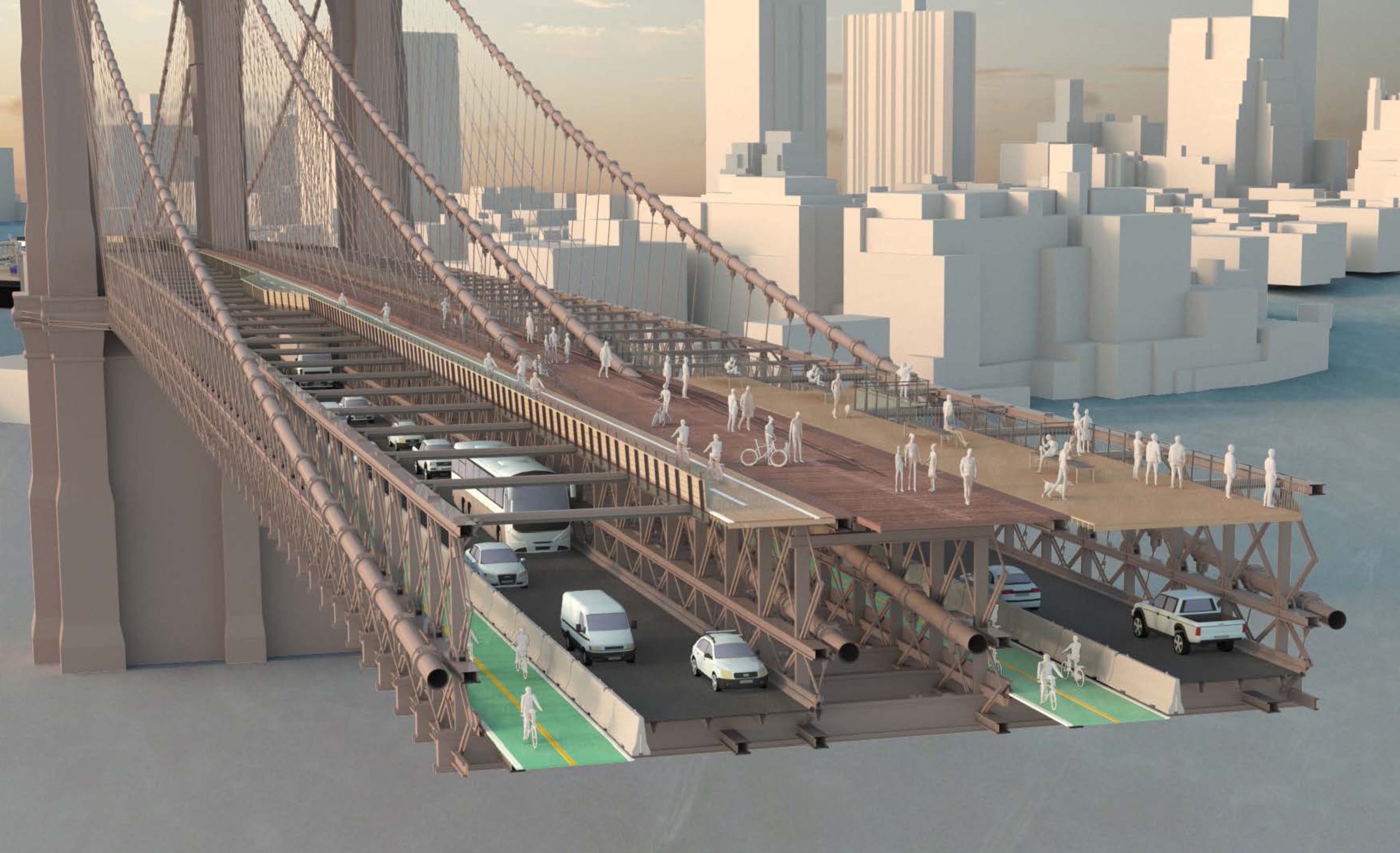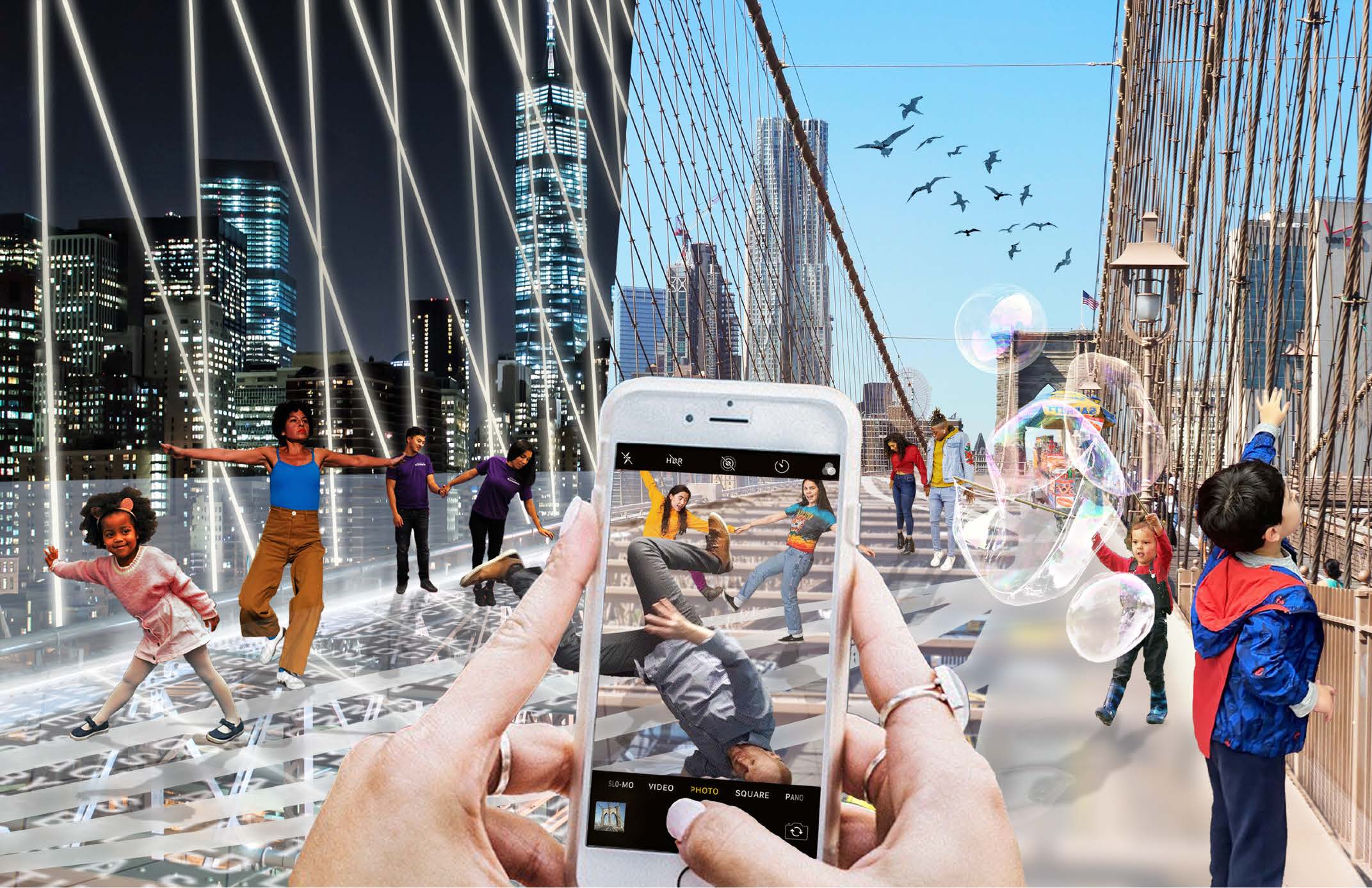After announcing six finalists in early July, the Brooklyn-based Van Alen Institute and New York City Council have revealed the two winning entrants of Reimagining Brooklyn Bridge. The international design competition invited participants to treat the 19th-century marvel of engineering to a 21st-century revamp with an eye on equity, sustainability, health, increased access to pedestrians and cyclists, and a touch of old-fashioned razzle-dazzle.
As noted in the press statement announcing the winners, the need for both expansive outdoor spaces that are accessible to all New Yorkers (and, yes, tourists) and alternative modes of transportation has become much starker during the coronavirus pandemic. As such, both winning design concepts—one selected by competition jurors from the professional category and one from the young adult category, open to designers 21 and younger—minimize vehicular traffic lanes on the iconic, borough-spanning bridge to make way for expanded bike paths and multifaceted public space.

Led by Scott Francisco of the multidisciplinary, New York- and Montreal-based design strategy firm Pilot Projects Design Collective, Brooklyn Bridge Forest, the winning design in the professional category, places lush, biodiversity-fostering “microforests” on both the Manhattan and Brooklyn ends of the bridge while tripling the amount of available space for cyclists and pedestrians by constricting the existing vehicular roadways.
Conceived to “reimagine the bridge as an icon of climate action and social equity, improving mobility while respecting the landmark structure,” the arboreal aspect of Brooklyn Bridge Forest expands beyond the bridge itself. In expanding the bridge’s existing wooden plank walkways with responsibly sourced timber, the proposal would also help safeguard 200,000-acres of tropical rainforest in Guatemala.

“We are energized by this victory for healthier cities and the global environment,” said Francisco in a statement. “Brooklyn Bridge Forest seeks to build a new vision of environmental sustainability and social equity — reimagining this beloved landmark as a way to connect New York City and its residents to forests and natural systems that sustain life for all.”

The competition’s other winner, Do Look Down, is an urbanist riff of sorts on the glass-bottomed walkway/observation deck craze that places a glass surface above the bridge’s girders, allowing visitors to peer directly below them. As for the bridge’s lower roadway, it would be converted into a bustling and dynamic public space for both pedestrians and cyclists and accommodate a range of vendors, performers, and the like.
What’s more, kinetic pavers that generate energy via the footsteps of those traversing the bridge will help to power LED displays and projection systems installed in and around the bridge that “visually honor the city’s cultures, histories, and identities in a non-invasive and sustainable manner.”

There’s a lot going on with this proposal (Shannon Hui, Kwans Kim, and Yujin Kim, young designers from Hong Kong, the San Francisco Bay Area, and New York comprised the team) and it definitely has the so-called “magic” factor (“new ideas that surprise, delight, and fascinate” per the Van Alen Institute) considered by the competition jury in spades. Other criteria included feasibility, safety, environmental security, and more.
“It’s been an incredible experience taking part in the Reimagining Brooklyn Bridge competition, a challenge originally addressing overcrowding that quickly became about so much more,” said Hui of the Do Look Down team. “This health crisis, in addition to its intersections with racial and queer injustice, has violently amplified the systemic inequities built into New York’s existing urban infrastructure, and for designers and developers to continue to operate within a vacuum would be to take advantage of a position of immense privilege.”

In total, Reimagining Brooklyn Bridge received more than 200 design submissions from teams and individuals hailing from 37 countries. The winners were selected via a process that considered both scores from the competition jury, and tallies from an online public voting period held in late July. City Council Speaker Corey Johnson first announced the competition in February. The cataclysmic events that followed in the following weeks and months obviously, as mentioned by Hui, had a major role in shaping the finalist designs.
“The winning ideas inspire us to think differently about the city’s infrastructure. They are a crucial first step to get New Yorkers thinking about how to adapt not only the bridge but also our streets and public spaces for future generations and stay true to our goal of creating an environmentally sensitive, bike-friendly city that prioritizes pedestrians over cars,” said Johnson. “While we review these bold long-term visions for the Brooklyn Bridge, the DOT should act with urgency to implement changes on the Brooklyn Bridge and on other East River crossings to give more space to cyclists and pedestrians as soon as possible.”











